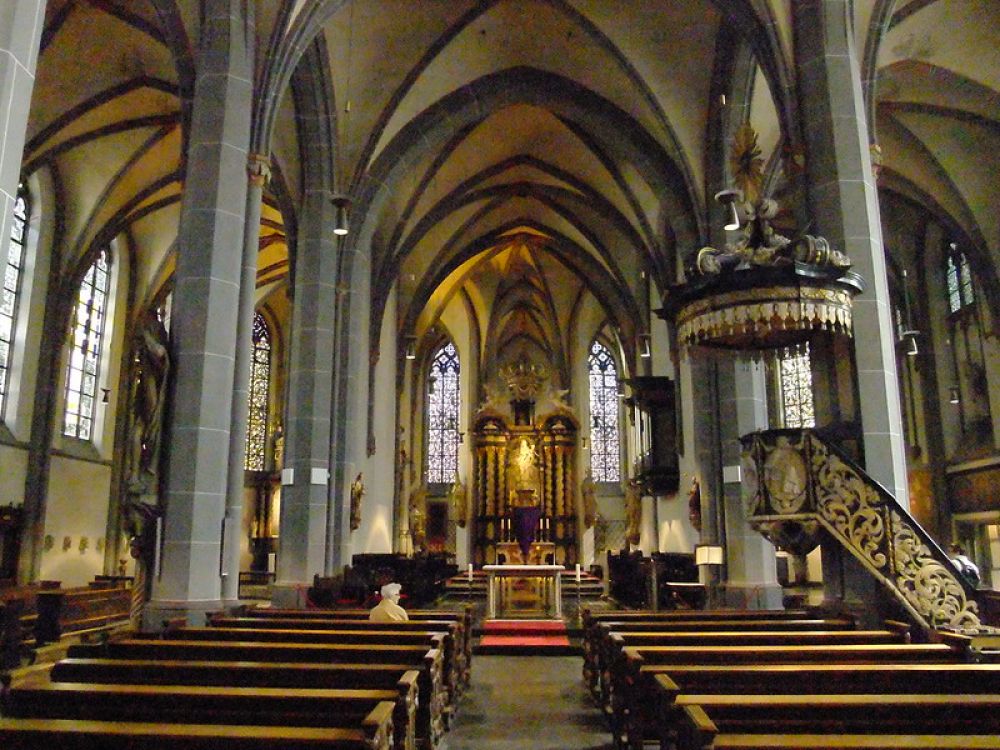

Lambertus Church, known in German as St. Lambertus Basilika, is a landmark of historic significance in the old town of Düsseldorf. This Catholic church, dedicated to Saint Lambertus, has been an enduring symbol of faith and history in the region. Its origins date back to the 13th century, where a Romanesque church was first constructed. Over time, several alterations and expansions have taken place, including the transition to a Gothic style during the 14th and 15th centuries.
The church is renowned for its twisted spire, which has captured the interest of visitors and locals alike. Although there are various legends about why the spire is twisted, the most accepted explanation is that the wood used in its construction became warped over time as it dried out. This distinctive feature has made Lambertus Church a unique point of interest in Düsseldorf's skyline.
As a historical monument, Lambertus Church has been receiving visitors for centuries. In its early years, it was primarily a place of worship for the local community. However, as Düsseldorf grew into a prominent city, the church gained recognition beyond its religious significance, attracting visitors interested in its architecture, art, and history.
During the 19th and 20th centuries, Lambertus Church became a staple in Düsseldorf's tours for its rich history, stunning architecture, and the mystery behind its twisted spire. Post World War II, with the restoration of the old town, the church solidified its position as a "must-see" cultural monument in the city.
In recent years, tourism trends have shifted with a growing emphasis on local and authentic experiences. Visitors to Lambertus Church are not just sightseeing but also engaging in cultural events, guided tours, and historical lectures. There has been a rise in thematic tours, which include the church as part of a broader exploration of Düsseldorf's religious heritage and medieval history.
Moreover, the integration of modern technology, such as virtual and augmented reality, has offered new ways to experience the historical site. Visitors can now enjoy interactive guides that provide a comprehensive insight into the church's past and detailed examinations of its artworks and architecture.
With increasing awareness about sustainability, there is also a notable trend towards responsible tourism. Efforts are being made to preserve the church's integrity while accommodating the interests of the modern traveler, all in a way that ensures future generations can also enjoy this remarkable edifice.